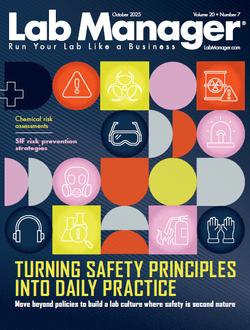Why Language Inclusivity in Research Matters

Maya Ragavan, M.D., M.P.H., M.S., associate professor of pediatrics at the University of Pittsburgh.
UPMC
In a diverse, multilingual society, the exclusion of non-English-speaking individuals from scientific research limits the validity and impact of health findings. Laboratory professionals, study coordinators, and research managers must recognize the implications of language access—not just as an ethical issue but as one that affects data quality, scientific rigor, and public health outcomes.
“Non-English-speaking individuals are being excluded from research, and we wanted to understand why,” said senior author Maya Ragavan, M.D., M.P.H., M.S., associate professor of pediatrics at the University of Pittsburgh. “Ensuring that everyone can participate in research, regardless of the languages that they speak, helps ensure that the findings are representative of the entire community, which ultimately makes for better, more robust science that benefits us all.”
The Scope of the Problem: Exclusion by Default
A recent study published in JAMA Network Open found that despite speakers of languages other than English (LOE) making up 8.2% of the U.S. population, only 9% of pediatric studies included LOE participants.
From a survey of 339 researchers at the University of Pittsburgh:
- 50% had worked with LOE participants at least once in the last five years.
- 42% of those did so reactively rather than by design.
“The exclusion of people who use LOE or inclusion that is reactive rather than proactive suggests that language often isn’t prioritized when researchers plan their studies,” said Henry Hoffman, lead author and medical student at Pitt. “Leaving out people who use LOE worsens the quality of research and makes the findings less likely to apply to the general public.”
Barriers to Inclusion: A Multifaceted Challenge
The study identified both individual and systemic barriers to including LOE speakers:
- Lack of training on how to involve non-English speakers in studies
- Limited team language capabilities, with teams often composed of only English-speaking staff
- Absence of budget planning for translation and interpretation services
- Difficulty accessing language services or knowing where to find them
- Scheduling complications involving interpreters
“Our study reveals significant barriers to inclusion of LOE speakers on individual and institutional levels,” said Hoffman. “Addressing these barriers can help us adjust research practices to make research more inclusive.”
Recommendations from the Field: What Researchers Say They Need
The respondents of the University of Pittsburgh study proposed several concrete solutions:
- Increased access to interpretation and translation services
- Budgeting guidance and flexibility from funders
- Training on inclusive research methodologies
- Networks of support and collaboration with experienced peers
“I think the main takeaway from this study is that the barriers to including LOE speakers are highly addressable,” said Ragavan. “For transformational change, there needs to be multi-level investment from institutions, researchers and funders as well as work to strengthen community partnerships.”
Roadmap for Lab Managers: Making Your Research Inclusive
To actively include non-English speakers in health and clinical research, lab managers and principal investigators can follow this checklist:
Pre-Study Planning
- ☑ Evaluate the linguistic diversity of your target population
- ☑ Allocate budget for certified interpretation and translation services
- ☑ Include language inclusivity as a criterion during protocol development
Team Training and Development
- ☑ Conduct workshops on language access and culturally competent research
- ☑ Partner with bilingual or multilingual researchers
Collaboration and Community Engagement
- ☑ Establish partnerships with local immigrant organizations and cultural groups
- ☑ Pilot test translated materials with community input
Infrastructure and Support
- ☑ Create an internal database of vetted language service providers
- ☑ Include timelines for language services in your project management tools
Building a Culture of Inclusion
Beyond individual studies, institutional transformation is necessary to sustain inclusion:
- Funders and grant agencies should require or incentivize inclusive practices.
- Academic institutions must offer infrastructure and resources to support multi-lingual research teams.
- Scientific journals should promote transparency about participant demographics and language access in reporting.
“For transformational change, there needs to be multi-level investment from institutions, researchers, and funders as well as work to strengthen community partnerships,”
Conclusion: Better Science Through Language Equity
Lab managers and researchers must begin to see language inclusivity not as a hurdle but as a cornerstone of ethical and rigorous research. Including speakers of languages other than English ensures data relevance, improves generalizability, and fosters trust with historically underrepresented communities.
The time to act is now—with proper planning, training, and institutional support, labs can lead the way in building equitable science.
Further Resources
- University of Pittsburgh Clinical and Translational Science Institute
- NIH Language Access Plan
- Cultural Competency Training for Health Researchers
- National Council on Interpreting in Health Care
This content includes text that has been generated with the assistance of AI. For more information, view Lab Manager’s AI use policy.











